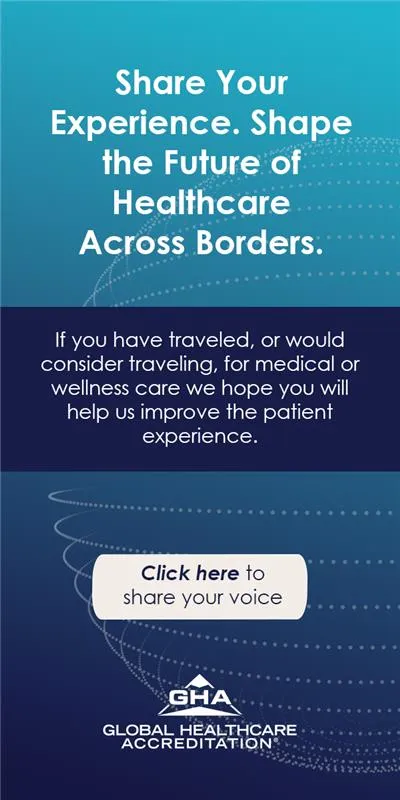Preventive health exams are powerful tools in detecting medical issues before symptoms emerge. But what happens when those routine tests reveal something unusual? Whether it's an abnormal blood panel, a suspicious imaging result, or an unexpected vital sign, flagged results can create anxiety—but they are also an opportunity for early intervention and better outcomes.
In the context of medical tourism, where patients often travel abroad for comprehensive checkups, understanding the follow-up process becomes even more important. Timely and well-coordinated steps after a flagged result can mean the difference between a minor issue being resolved and a major health problem progressing undetected.
This article breaks down what typically happens after a preventive exam flags something concerning, what international patients should expect, and how to navigate the next steps effectively.
1. Immediate Communication of Results
The process begins with the interpretation of test results. In most international preventive care settings, patients receive their results on the same day or within 24–48 hours, especially in executive health programs. If any abnormality is flagged, healthcare providers promptly notify the patient and recommend next steps.
For example, if an imaging scan shows a lesion, or a blood test reveals elevated cholesterol or inflammatory markers, this is clearly communicated. The speed and clarity of this communication are crucial for patient peace of mind and decision-making.
2. Clarification Through Confirmatory Testing
Initial results from preventive exams are screening tools—not final diagnoses. The next logical step is usually confirmatory testing. These may include:
- Advanced blood panels
- MRI, CT scan, or ultrasound for deeper imaging
- Biopsy or tissue sampling if a mass is suspected
- Cardiac stress testing if heart risk is detected
- Colonoscopy or endoscopy for GI-related flags
- Genetic testing for hereditary risks
Confirmatory tests are designed to either validate or rule out the flagged concern. In many international clinics, these tests can be arranged within days, keeping the process efficient for traveling patients.
3. Referral to a Specialist
If the second round of testing confirms the presence of a potential issue, the patient is referred to an appropriate specialist. The type of specialist depends on the condition detected:
- Cardiologist for heart-related abnormalities
- Oncologist if a tumor or cancer marker is identified
- Endocrinologist for thyroid or diabetes indicators
- Neurologist for nerve or brain findings
- Gastroenterologist for digestive system issues
In medical tourism settings, multidisciplinary teams are often on hand to facilitate rapid referrals. This approach ensures continuity of care and reduces delays between detection and expert consultation.
4. Discussion of Findings and Options
Once a specialist is involved, a detailed consultation follows. This step includes:
- Explaining the meaning of the flagged result
- Discussing the implications of any diagnosis or risk factor
- Offering options for further monitoring or treatment
For many patients, the result may not require immediate treatment but instead careful observation or lifestyle changes. Others may be presented with choices like minimally invasive procedures, surgical options, or medication-based management.
Importantly, international providers often offer extended counseling time and holistic education, helping patients understand their health condition better than they might in a rushed domestic system.
5. Treatment Planning or Surveillance Pathway
Depending on the severity of the finding, there are generally two routes from this point:
a. Active Treatment Path
This may involve scheduling a procedure abroad or being referred to the patient’s local healthcare system with detailed documentation. For those choosing to receive care abroad, the advantage lies in continuity—treatment can often begin during the same trip, especially in well-coordinated international health centers.
b. Surveillance and Lifestyle Management
In cases where the concern is low-risk (e.g., a benign cyst, borderline blood pressure, or pre-diabetes), patients are advised to enter a watchful waiting protocol. This includes:
- Regular monitoring
- Repeat testing after a set interval
- Diet, exercise, and behavior recommendations
- Teleconsultations for follow-up
Patients returning to their home countries are typically given comprehensive reports and recommendations for future screening intervals and health goals.
6. Second Opinions and International Continuity of Care
Patients undergoing medical checkups abroad may sometimes wish to validate their findings with another provider. Many preventive care programs now include second opinion services—either within the same hospital or through virtual consultation networks. This practice supports diagnostic accuracy and reinforces patient confidence.
For continuity of care, digital health records, imaging CDs, and physician summaries are typically provided. Patients are encouraged to share these with their primary care doctors or specialists at home.
7. Emotional Support and Psychological Considerations
Being told that “something was flagged” can be unsettling—even if it turns out to be minor. High-end preventive care programs increasingly recognize this emotional dimension, offering access to:
- On-site mental health professionals
- Patient support liaisons
- Follow-up calls or virtual check-ins
This aspect is especially important in medical tourism, where patients might be far from their usual support systems.
8. Preventive Checkups as a Starting Point, Not a Conclusion
One of the biggest misconceptions about preventive exams is that they are “one-off” events. In reality, they serve as the foundation for an ongoing health journey. A flagged result can:
- Lead to early diagnosis and more successful outcomes
- Encourage deeper engagement with personal health
- Serve as a wake-up call for needed lifestyle changes
By positioning preventive care as a starting point rather than a standalone event, international providers are helping patients integrate wellness more sustainably into their lives.
Turning a Red Flag Into a Roadmap
In conclusion, When a preventive exam flags something, it's not the end of the road—it’s the beginning of a more informed and proactive approach to health. The process that follows is crucial, involving accurate diagnostics, expert consultation, thoughtful decision-making, and sometimes treatment or surveillance.
For international patients, understanding this workflow ensures they can make the most of their preventive care abroad. With the right follow-up, a flagged result transforms from a source of fear into a powerful opportunity for life-saving intervention and long-term wellness.
If you're considering this treatment, Better by MTA is here to help. Through our exclusive partnership with Mastercard, we connect you to trusted hospitals and doctors worldwide, ensuring price transparency and secure, flexible payment options. Whether you're looking to use a credit card, bank transfer, or explore upcoming patient financing options, we make your medical journey seamless and worry-free.
Get started today and book confidently without hidden fees or financial risks. Click the link below to request a free quote: https://www.better.medicaltourism.com/get-a-quote













